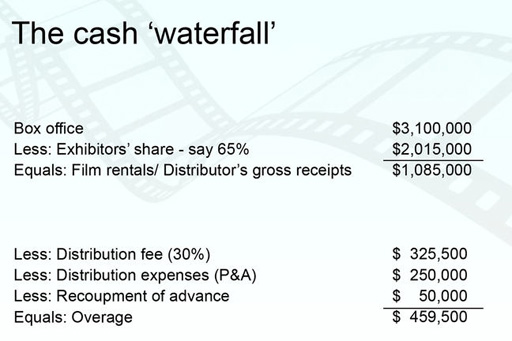3.3 What do the numbers look like?
Now let’s look at how those numbers play out with a pretty successful film that takes $3.1m at the box office.
- The exact percentage of box office that is returned to the distributor varies according to a number of factors, but on average a surprisingly small amount is generally returned. In this case 35% goes to the distributor with 65% retained by the exhibitor, the cinema.
- That means that just over $1m goes to the distributor.
- The distributor takes a distribution fee (30% is typical) and recovers expenses, and the advance, the amount paid for the film.
- After all this, the producer only earns a little over $0.5m for a film that took over $3m at the box office.
This is a pretty successful film, and proportionally little is going to the producer. So you can see that most films in fact do not make any money for the producer at the box office. They make a loss that is made up by revenue in all the other windows.
Does this surprise you? Why do you think this is? Obviously it was not the case 50 years ago when other windows were not present to make up for the loss made in cinemas.

